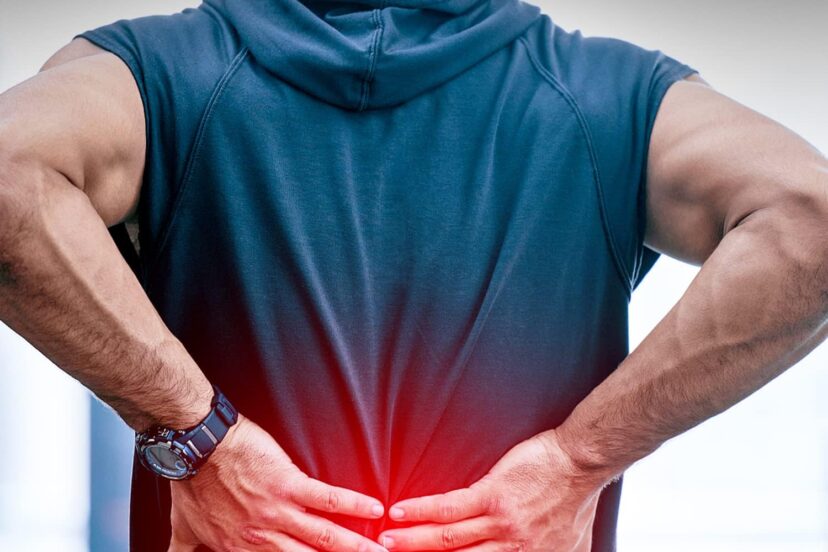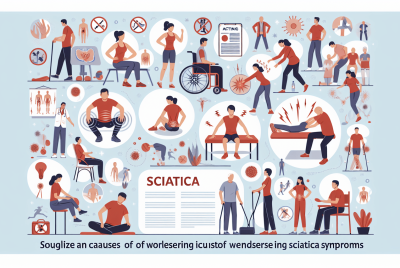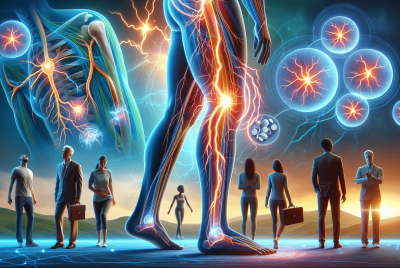Back Pain Relief: 10 Proven Home Remedies To Try
If you’ve ever experienced the discomfort of back pain, you know how much it can affect your daily life. Whether it’s a dull ache or a sharp twinge, finding relief becomes a top priority. Luckily, there are numerous home remedies that have been proven effective in alleviating back pain. From gentle exercises and stretches to heat therapy and herbal remedies, this article will provide you with a comprehensive list of accessible and proven methods to find relief from back pain. So sit back, relax, and discover 10 home remedies that could potentially help ease your back pain and improve your overall well-being.
1. Heat and Cold Therapy
If you’re looking for quick and effective relief from back pain, heat and cold therapy can be your best friends. These simple yet powerful treatments can help alleviate pain, reduce inflammation, and promote healing in your back muscles.
1.1 Hot or Cold Compress
Applying a hot compress or a cold compress to your back can bring immense relief. So, which one should you choose? Well, it depends on the nature of your pain.
For acute injuries or sudden muscle strains, a cold compress is recommended. The cold temperature helps numb the area, reduce inflammation, and minimize swelling. Simply wrap a bag of ice or a cold pack in a thin towel and apply it to the affected area for about 15-20 minutes at a time.
On the other hand, if your pain is chronic or you’re experiencing muscle stiffness, a hot compress can work wonders. The warmth helps increase blood flow to the area and relaxes tight muscles. You can use a hot water bottle, a heat pack, or even a warm towel soaked in hot water. Make sure the temperature is comfortable and apply it to your back for about 15-20 minutes.
1.2 Warm Bath or Shower
Who doesn’t love a soothing warm bath or shower? Not only do they help you relax and unwind, but they can also provide relief from back pain. The warm water helps improve circulation, relaxes tense muscles, and eases stiffness.
Consider adding Epsom salt to your bathwater for an extra dose of pain relief. Epsom salt contains magnesium sulfate, which can be absorbed through the skin and help reduce inflammation. Soak in the warm bath for about 20-30 minutes and let the tension melt away. If a bath isn’t possible, a warm shower can also do the trick.
2. Stretching and Strengthening Exercises for Back Pain Relief
Stretching and strengthening exercises are essential for maintaining a healthy back and preventing future pain. They help improve flexibility, increase muscle strength, and promote proper alignment. Here are a few exercises you can try:
2.1 Hamstring Stretch
Tight hamstrings can contribute to back pain, so it’s important to keep them flexible. To stretch your hamstrings, sit on the floor with your legs extended in front of you. Slowly lean forward from your hips, reaching towards your toes. Hold the stretch for 30 seconds, then release. Repeat this stretch a few times on each leg.
2.2 Child’s Pose
Child’s Pose is a gentle stretch that targets the lower back and hips. Start on all fours, then sit back on your heels, lowering your forehead to the floor and extending your arms forward. Rest in this position for 30-60 seconds, focusing on deep breathing and allowing the stretch to relax your back.
2.3 Cat-Camel Stretch
The Cat-Camel stretch is great for loosening up the entire spine and relieving back pain. Begin on all fours with your hands directly under your shoulders and your knees under your hips. Slowly arch your back towards the ceiling, tucking your chin towards your chest (the “cat” position). Then, reverse the movement and lower your belly towards the floor while lifting your head and tailbone (the “camel” position). Repeat this sequence 10 times, moving with fluidity and control.
3. Proper Posture
Maintaining good posture throughout the day is vital for a healthy back. Poor posture can put excessive strain on your muscles and spine, leading to pain and discomfort. Here are a few tips to help you improve your posture:
3.1 Ergonomic Chairs and Supports
Investing in an ergonomic chair can make a world of difference for your back. Look for a chair that provides lumbar support, promotes proper alignment, and allows for adjustments in height and tilt. Additionally, using cushions or back supports can help maintain the natural curve of your spine and reduce strain.
3.2 Sit-Stand Desks
Sitting for prolonged periods can take a toll on your back, so incorporating a sit-stand desk into your workspace can be highly beneficial. These desks allow you to switch between sitting and standing positions, preventing prolonged stress on your back muscles. Alternate between sitting and standing throughout the day to keep your back happy and healthy.
4. Massage Therapy for Back Pain Relief
massage therapy is not only incredibly relaxing but can also provide substantial relief from back pain. Here are two options you can explore:
4.1 Self-Massage Techniques
You don’t necessarily need to visit a professional to experience the benefits of massage therapy. There are self-massage techniques you can try at home to relieve tension and reduce pain. Using your hands, apply gentle pressure to the affected area and use circular motions to knead the muscles. You can also use a foam roller or tennis ball to target specific areas. Experiment with different techniques and find what works best for you.
4.2 Professional Massage
If you prefer a more luxurious and comprehensive massage experience, booking a session with a professional massage therapist is a fantastic option. They have the expertise to target specific problem areas, release muscle tension, and promote relaxation. Whether it’s Swedish massage, deep tissue massage, or another technique, a professional massage can do wonders for your back.
5. Herbal Remedies for
Nature has provided us with numerous herbs that have proven medicinal properties. Some herbal remedies can effectively alleviate back pain. Here are two popular options:
5.1 Turmeric
Turmeric is a vibrant yellow spice commonly found in Indian cuisine. It contains a compound called curcumin, which has potent anti-inflammatory properties. Turmeric can be consumed as a supplement or incorporated into your cooking. Adding a teaspoon of turmeric to warm milk or tea can create a soothing and pain-relieving beverage.
5.2 Ginger
Ginger is not only delicious but also has powerful anti-inflammatory and pain-relieving effects. You can brew ginger tea by steeping grated ginger in hot water for 10-15 minutes. Adding honey and lemon can enhance the flavor and provide additional health benefits. Sip on this warm and comforting tea to help ease your back pain.
6. Over-the-Counter Pain Medications
If your back pain persists or becomes severe, over-the-counter pain medications can provide temporary relief. Here are two commonly used options:
6.1 Nonsteroidal Anti-Inflammatory Drugs (NSAIDs)
Nonsteroidal anti-inflammatory drugs, such as ibuprofen and naproxen, can help reduce pain, inflammation, and swelling. Follow the recommended dosage instructions provided on the packaging, and consult your healthcare provider if you have any concerns or existing health conditions.
6.2 Acetaminophen
Acetaminophen is a pain reliever that can be used for mild to moderate back pain. Unlike NSAIDs, it does not have anti-inflammatory properties. Be sure to follow the recommended dosage instructions and consult your healthcare provider if you have any questions or medical conditions.
7. Yoga and Pilates
Yoga and Pilates are fantastic forms of exercise that focus on flexibility, core strength, and body awareness. They can both help alleviate back pain and prevent future episodes. Here are two beneficial poses you can practice:
7.1 Downward Dog Pose
Downward Dog is a classic yoga pose that stretches the entire body, particularly the back, hamstrings, and shoulders. Start on your hands and knees, then lift your hips towards the ceiling, forming an inverted V shape with your body. Keep your arms straight, press your heels towards the floor, and lengthen your spine. Hold this pose for 30-60 seconds, focusing on deep breathing and releasing tension.
7.2 Bridge Pose
Bridge Pose is a Pilates exercise that targets the glutes, hamstrings, and lower back. Lie on your back with your knees bent and feet flat on the floor. Inhale, engage your core, and slowly lift your hips towards the ceiling. Keep your arms by your sides and press your heels into the floor. Hold this position for 30 seconds to 1 minute, then lower your hips back down. Repeat this exercise for a few repetitions.
8. Proper Sleep Positions
Your sleep position can significantly affect the health of your back. Sleeping in a poor position can exacerbate pain and even lead to new discomfort. Here are two sleeping positions that can help alleviate back pain:
8.1 Sleeping on Your Back
Sleeping on your back with a pillow to support your neck and another pillow under your knees can help maintain proper alignment. This position allows your spine to rest in a neutral position, reducing strain on your back muscles and promoting relaxation.
8.2 Using Pillows for Support
If you prefer to sleep on your side, placing a pillow between your knees can help align your hips and relieve pressure on your lower back. Additionally, using a pillow that supports the natural curve of your neck can prevent strain and discomfort.
9. Stress Management
Stress can contribute to muscle tension and worsen back pain. Therefore, managing stress is crucial for both your physical and emotional well-being. Here are two techniques to help you relax and reduce stress:
9.1 Deep Breathing Exercises
Deep breathing exercises help activate the body’s relaxation response and promote a sense of calm. Find a quiet and comfortable space, sit or lie down, and take slow, deep breaths. Inhale deeply through your nose, allowing your belly to expand, then exhale slowly through your mouth. Repeat this pattern for several minutes, focusing on the sensations of your breath and allowing tension to release with each exhale.
9.2 Meditation
Meditation is a powerful tool for stress management and overall well-being. Find a peaceful environment, sit in a comfortable position, and focus your attention on a specific object, word, or your breath. Allow your thoughts to come and go without judgment, and simply observe them without attachment. Start with just a few minutes a day and gradually increase the duration as you become more comfortable with the practice.
10. Acupuncture
Acupuncture is an ancient Chinese healing practice that involves the insertion of thin needles into specific points on the body. It is believed to help release blocked energy and restore balance, ultimately reducing pain and promoting healing. Here are two types of acupuncture you can explore:
10.1 Traditional Acupuncture
Traditional acupuncture involves the insertion of hair-thin needles into specific points along the energy channels of the body. These points are carefully chosen based on the individual’s specific needs and can help address not only back pain but also other health concerns.
10.2 Electroacupuncture
Electroacupuncture is a modern variation of traditional acupuncture. It involves the use of electrodes attached to the acupuncture needles, which deliver a gentle electrical current. This additional stimulation can enhance the effects of the treatment and provide further pain relief.
In conclusion, back pain can be debilitating and affect your daily life, but there are numerous home remedies you can try to find relief. From heat and cold therapy to stretching exercises, proper posture, and herbal remedies, there are various options to explore. Additionally, massage therapy, over-the-counter pain medications, yoga, and pilates, proper sleep positions, stress management techniques, and acupuncture can all provide significant relief. Remember, it’s important to listen to your body and consult with a healthcare professional if your back pain persists or worsens. With patience and a comprehensive approach, you can find the relief you deserve and get back to living your life to the fullest.




